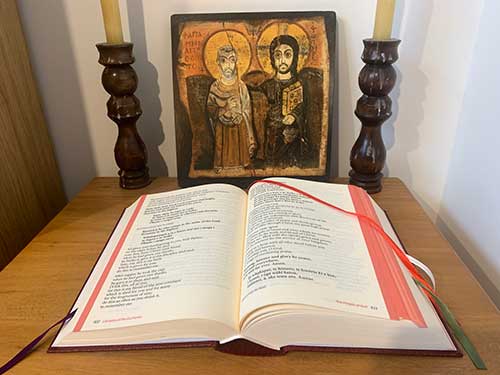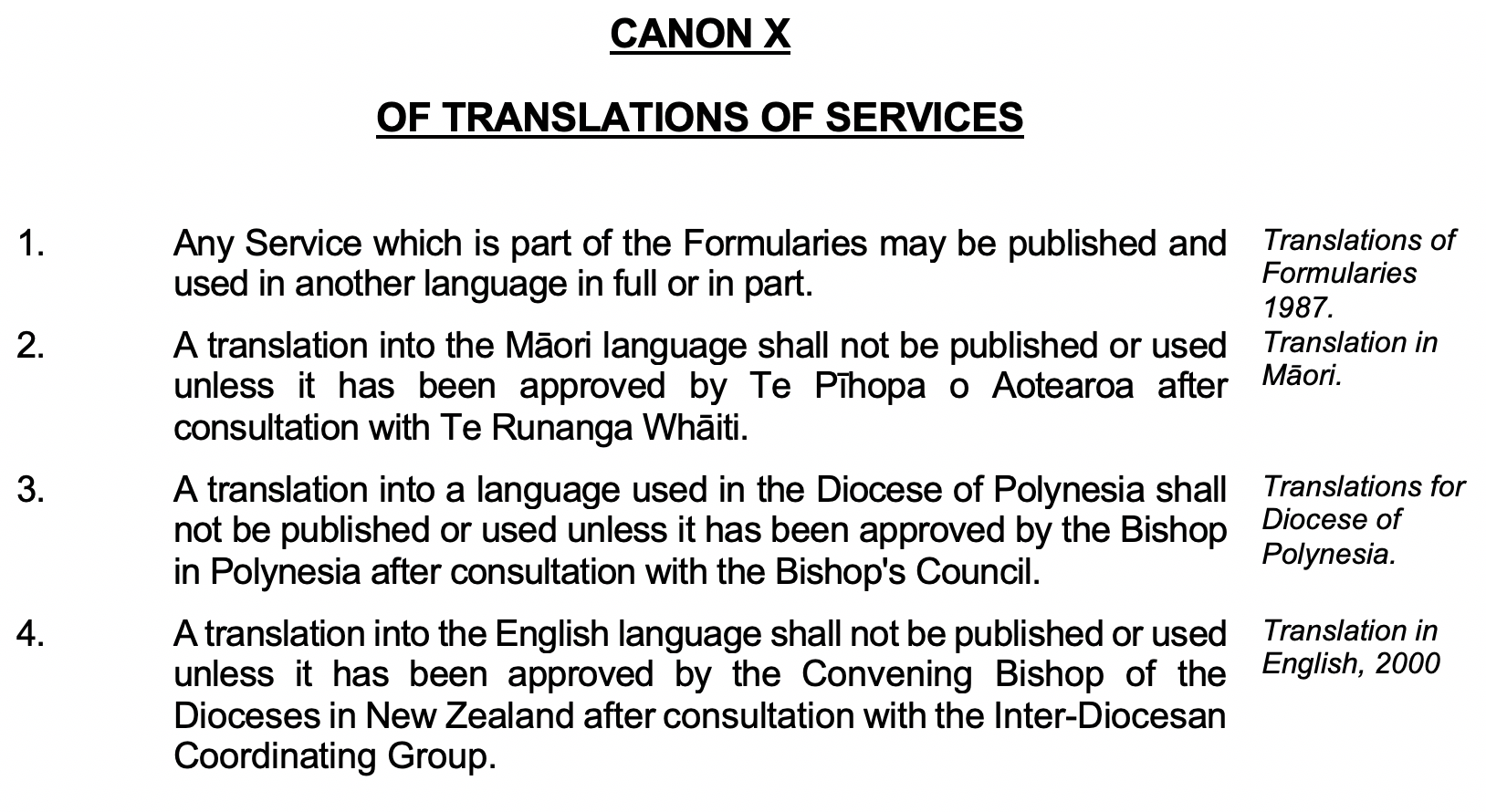
This is a second post in a series. Read about A New Zealand Prayer Book He Karakia Mihinare o Aotearoa (2020) first.
In the Constitution of the Anglican Church in Aotearoa, New Zealand and Polynesia, there is a very significant place held by what is called “A New Zealand Prayer Book – He Karakia Mihinare o Aotearoa”:
This Church holds and maintains the Doctrine and Sacraments of Christ as the Lord has commanded in Holy Scripture and as explained in…
The Constitution/ Te Pouhere Part B1
A New Zealand Prayer Book – He Karakia Mihinare o Aotearoa.
You would think that, “what does A New Zealand Prayer Book – He Karakia Mihinare o Aotearoa here refer to?” would be straight forward to answer. It isn’t!!!
Some might think it refers to the 1989 bound A New Zealand Prayer Book – He Karakia Mihinare o Aotearoa. Others, to the latest authorised bound A New Zealand Prayer Book – He Karakia Mihinare o Aotearoa (ie, the 2005 edition). Yet others see this term as referring to all worship formularies alternative to the Book of Common Prayer (whether bound physically in a book or not).
Whatever might be the case – it is NOT the 2020 book just published with the title A New Zealand Prayer Book – He Karakia Mihinare o Aotearoa!
This information is hidden in plain sight in the Foreword by The Ven. Carole Hughes, Chair of the Common Life Liturgical Commission. She lists off new formularies (binding agreements following a complex process which I will outline in a moment) and then indicates that there is more to this 2020 book than these agreed formularies:
In addition to new formularies, this edition includes the 2010 Schema, updated in 2019 for this publication, of sentences, collects and readings, along with approved Te Reo translations. Also included are new Fijian, Tongan, Samoan, and Hindi approved translations of some of the Eucharistic Liturgies.
Foreword ix
One needs to be clear what a formulary is. A formulary is binding on the church in both practice and doctrine. To make or change a formulary requires the complex process of being passed by General Synod Te Hinota Whanui (GSTHW), then passed by a majority of diocesan synods and hui amorangi, then passed by a two-thirds majority in all Houses at GSTHW, after which there is a year for anyone to make any further appeals.
It is clear that the services bound into the 1989 A New Zealand Prayer Book – He Karakia Mihinare o Aotearoa were formularies, they were binding on the Church, and our worship was to conform to what we had agreed to.
This is NOT the case with this 2020 book with the same title, A New Zealand Prayer Book – He Karakia Mihinare o Aotearoa. Many of the resources in this 2020 book are not formularies.
The Foreword, quoted above, mentions a “2010 Schema”. According to the Appendix Title D (dated 2018) “A Schema for Sentences. Collects, and Readings” was “received” by GSTHW in 2010. [I cannot see this in the Minutes of the 2010 GSTWH, but that makes no difference to my point.] “Received” has no canonical status, and certainly is not a formulary. Furthermore, the Foreword goes on to say this Schema, which the Foreword itself keeps distinct from “new formularies”, was “updated in 2019 for this publication”. I do not know what that means – there was no meeting of GSTHW in 2019. Using the passive tense, the Foreword gives us no idea who updated it.
The Schema is a rearrangement and combination of formularies.
Clearly, rearranging elements of formularies does not give us a (new) formulary. Say we rearrange the paragraphs of the Eucharistic Prayer – what results is not even allowable, let alone a (new) formulary. I sought a different sequence in our rite of baptism from the main text version where we pour water over someone after which we check if people believe anything. In order to have the order profession of faith preceding baptism, I had to get a motion passed at General Synod Te Hinota Whanui (GSTHW) which initiated the “twice round” process of GSTHW, diocesan synods and hui amorangi, back to GSTHW and then wait a year. This is now part of the baptism formulary: Option D page 397.
Similarly, combining elements of formularies does not give us a (new) formulary.
The Foreword continues that there are approved translations into Māori, Hindi, Samoan, Tongan, and Fijian. A translation is “approved” in accordance with Title G Canon X of Translations of Services.

To be clear, a translation of a formulary may be published and used BUT such a translation is NOT a formulary. You can translate, publish, and use to your hearts content into any language not mentioned in clauses 2-4 which restricts this in the case of languages of the South Pacific. I can translate into Dutch for a visiting group of Old Catholics or into Spanish for a celebration of Camino pilgrims (and publish and use these) but these translations are not formularies.
For the avoidance of any doubt: I am absolutely delighted to see liturgical resources in Māori, Hindi, Samoan, Tongan, and Fijian. This post is simply highlighting that this 2020 book titled A New Zealand Prayer Book – He Karakia Mihinare o Aotearoa is not a binding together of formularies and hence has a different status to the 1989 book which happens to have the same name.
Our Church has now increased the confusion as to exactly what it is that our Constitution is referring to when it talks about “A New Zealand Prayer Book – He Karakia Mihinare o Aotearoa”. Yet again I repeat: our Church seriously needs a comprehensive review after which it is clear what is required, what is allowed, and what is forbidden.
This series began here, and is continued:
3) looking in detail at the book, starting with the first few pages.


